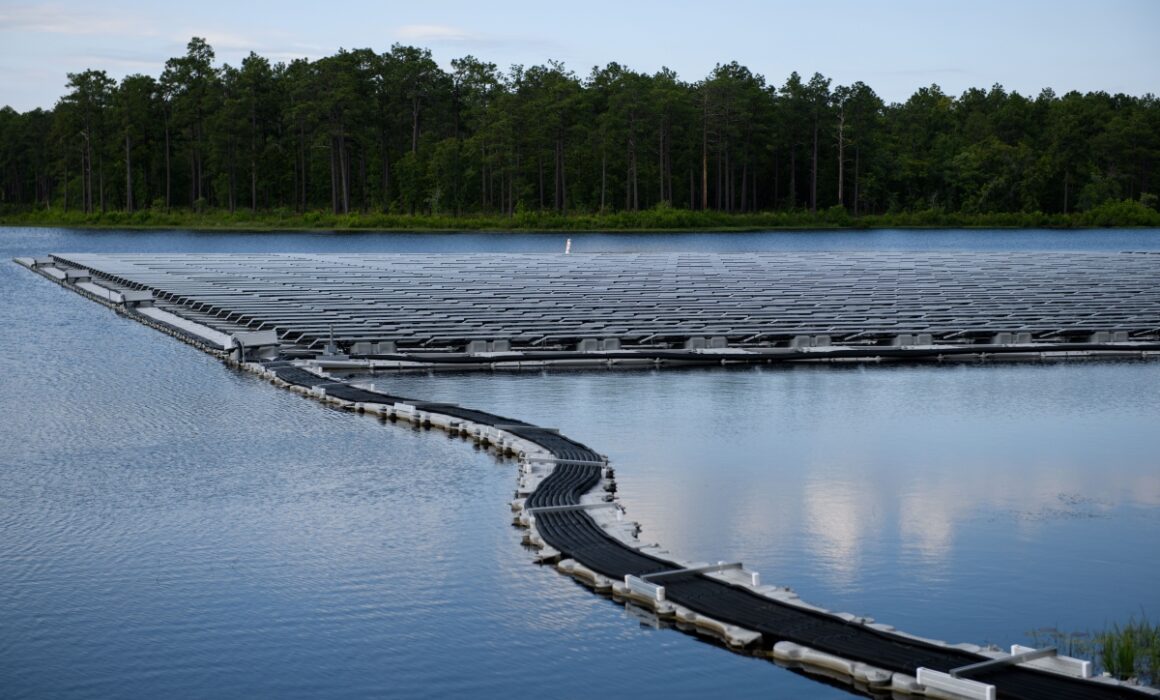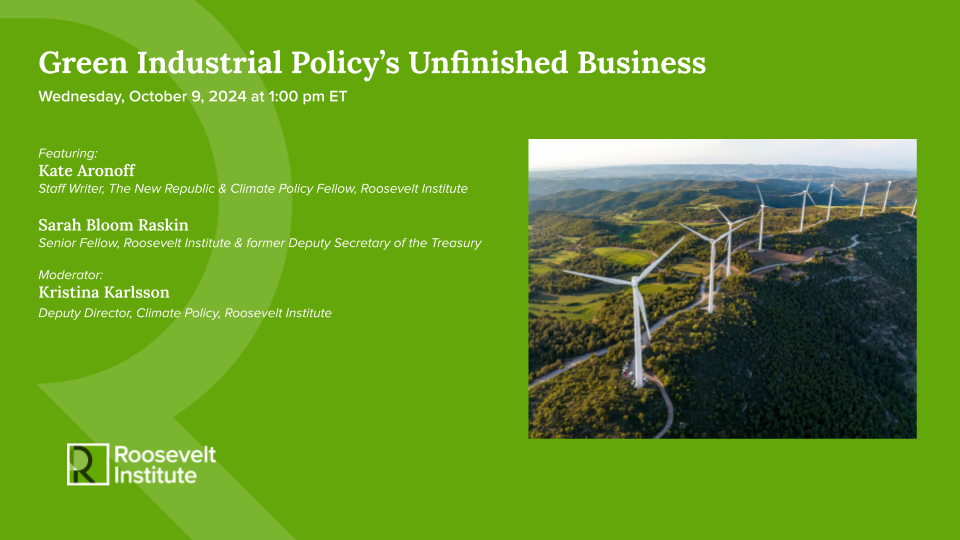A National Plan for Rapid Solar Build-Out
October 4, 2024
The renewable energy transition is within reach—if the government takes a more active role.
The Roosevelt Rundown features our top stories of the week.

A floating solar panel system constructed on top of a lake in Aberdeen, North Carolina. (Photo by Melissa Sue Gerrits/Getty Images)
A Whole-of-Government Plan for Building Out Solar
To transition its economy into one powered by renewable energy—not fossil fuels—the US will need to build millions of acres of solar capacity. Doing so at the speed necessary to match the urgency of the challenge will require the government to plan and coordinate in ways only it can, as authors from Roosevelt and the Climate and Community Institute argue in a new report.
“The uncoordinated, largely privately driven approach to solar development and deployment is not moving fast enough,” write Johanna Bozuwa, Dustin Mulvaney, Isabel Estevez, Adriana DiSilvestro, Kristina Karlsson, and Sunny Malhotra. Part of the inefficiency is that “no entity currently has the authority—and therefore the mandate—to develop a vision that cuts across the jurisdictional boundaries of the many agencies” that would have to be involved in an energy transition.
The federal government can step in with a coordinated, nationwide approach that:
- Identifies high-benefit, low-harm solar sites through whole-of-government land-use and site planning;
- Coordinates with state, local, and Tribal governments;
- Embeds community, worker, and environmental benefits into the process; and
- Expands support for public and nonprofit solar companies—which are free from the hindrance of needing to generate profits.
The report finds that there are roughly 226 million acres of low-harm, high-benefit land available for solar deployment—and the US only needs between 3.5 and 15 million acres for the green transition. “While land use and solar siting will present a challenge,” the authors write, “it is ultimately a problem that can be resolved.”
Read more from the new report, and for further discussion about what the public sector can do to end fossil fuel production, join Roosevelt for a webinar on October 9.
Fixing the Electric Utilities Industry
Building out the necessary infrastructure for the energy transition includes renewable energy generation as well as transmission. But our current electric utilities industry—one driven by profit generation—isn’t built for this monumental task. As Roosevelt’s Oskar Dye-Furstenberg writes in a new blog post, “the same actors responsible for developing the infrastructure essential to decarbonization are also incentivized against building it at the scale required.”
Through case studies of southeastern US–based utility Entergy and the mid-Atlantic regional transmission organization PJM, Dye-Furstenberg illustrates how utility companies obstruct efforts to develop new transmission infrastructure, and how the structure of the current energy market lends itself to price spikes (for an analysis of how monetary policy could help stabilize energy prices, read more here).
Read more from Dye-Furstenberg about electric utilities and how the government can address their misaligned economic incentives, and catch up on Niko Lusiani’s recent brief on the topic.
What We’re Talking About
Today’s #JobsReport shows that the US labor market is even stronger than we thought 👊
254,000 jobs were added in September and the unemployment rate fell to 4.1% ⬇️ https://t.co/QvPy25807W
— Roosevelt Institute (@rooseveltinst) October 4, 2024
What We’re Reading
Utilities Are America’s Real Monopoly Problem and Need Scrutiny – by Roosevelt Fellow Joshua Macey – Bloomberg Law
Dockworkers Are Waging a Battle Against Automation. The Rest of Us May Want to Take Notes – feat. Roosevelt Senior Fellow Sameera Fazili – CNN
Dockworkers Strike Suspended, Tentative Agreement Includes 62 Percent Pay Raise over 6 Years – ABC News
Devastation from Hurricane Helene Could Bring Semiconductor Chipmaking to a Halt – CNN
